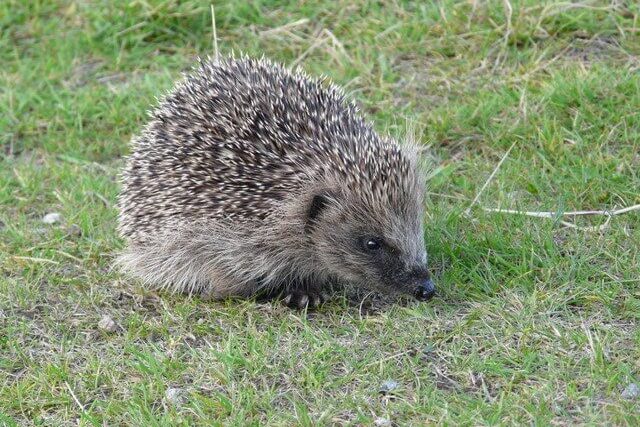
Fifty years ago, in a seemingly innocuous attempt to control garden pests, hedgehogs were introduced into a garden on South Uist in the Western Isles.
Originating from the idea that they would consume slugs and snails, the presence of hedgehogs soon escalated into a significant ecological issue.
As their population burgeoned following their introduction in 1974, these animals expanded their diet to include not just garden pests but also the eggs and chicks of ground-nesting birds, which are crucial to the local biodiversity.
By 2001, the growing hedgehog population had become alarming enough to prompt conservation efforts aimed at mitigating their impact on native wildlife.
Hedgehogs, though often celebrated in popular culture as charming and harmless creatures, as seen in Beatrix Potter’s character Mrs Tiggy-Winkle, were proving to be a threat in this unique ecosystem.
They are not indigenous to the Western Isles, which are important breeding grounds for various species of waders, including the lapwing, curlew, dunlin, and redshank. These birds are of considerable conservation concern, especially since noticeable declines were observed from the mid-1980s.
Research conducted by NatureScot from 2012 to 2014 revealed that in areas like South Uist, where hedgehog populations were dense, there was a 55% nest failure rate among the monitored bird populations.
The initial reaction to this crisis was a proposed cull, which was quickly shelved following public backlash. The alternative strategy that emerged was the Uist Wader Project, a collaborative effort between NatureScot and RSPB Scotland.
This project involved humanely trapping the hedgehogs and relocating them to the Scottish mainland after a health check and tagging, with assistance from organisations like the Hessilhead Wildlife Rescue Centre in North Ayrshire.
Since the project’s inception in 2001, a total of 2,441 hedgehogs have been relocated. Methods to capture them included nocturnal searches when hedgehogs are most active, and the use of sniffer dogs and live traps.
Volunteers played an essential role in this process; individuals like Pat Holtham became heavily involved, even converting part of her garage into a temporary shelter for up to 44 hedgehogs at a time, contributing to the care of approximately 1,200 hedgehogs over the years.
“My love of hedgehogs is obsessive,” she laughed.
“They are wonderful creatures and they are all different and have their own personalities. It sounds stupid to say that but it’s true.”
She added: “I’m getting withdrawal symptoms. I’ve not had a hedgehog for two years.”
Thanks to these concerted efforts, hedgehogs have been successfully removed from North Uist, leading to a significant reduction in bird predation.
However, populations still persist in Benbecula, South Uist, Harris, and Lewis.
A spokesperson for NatureScot said: “There is no plan to remove hedgehogs from Lewis and Harris as there isn’t the same overlap between hedgehog habitat and the high density wader populations found on the Uists machairs.
“There have been no recent reports of a hedgehog from the North Uist area.”
NatureScot acknowledges the ongoing challenge and is preparing for the next stages of the project, with updates expected in the upcoming summer.
RSPB Scotland said: “While there is not presently any official monitoring being undertaken, hedgehog sightings remain common on Uist.
“We will be in a position to discuss the project development in more detail later this year, when we will be holding a community talk as part of the Outer Hebrides Wildlife Festival in June/July.
“We would encourage anyone who is interested to come along to find out more information.”
——————————————————————————
At Natural World Fund, we are passionate about stopping the decline in our wildlife.
The decline in our wildlife is shocking and frightening. Without much more support, many of the animals we know and love will continue in their decline towards extinction.
When you help to restore a patch of degraded land through rewilding to forests, meadows, or wetlands, you have a massive impact on the biodiversity at a local level. You give animals a home and food that they otherwise would not have had, and it has a positive snowball effect on the food chain.
We are convinced that this is much better for the UK than growing lots of fast-growing coniferous trees, solely to remove carbon, that don’t actually help our animals to thrive.
This is why we stand for restoring nature in the UK through responsible rewilding. For us, it is the right thing to do. Let’s do what’s right for nature!
Donate today at https://naturalworldfund.com/ and join in the solution!

